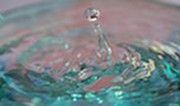
I spent an afternoon at the Museum of Modern Art when I was in New York earlier this week and almost literally stumbled on a new way of looking at paintings that had a remarkable effect on my experience with many of the paintings I saw that day.
Here’s what you do:
- For each painting, spend your usual time doing whatever it is you usually do when looking at a painting.
- When you would ordinarily move on to the next painting, take a half step closer to the current one instead.
What I found is that this often completely refreshed the painting for me, sometimes in a really electrifying way, despite the fact that I wasn’t that much closer to it. It had a much bigger effect than stepping backwards, or stepping to one side or the other to change the angle of viewing.
- If the painting isn’t refreshed in any way by this step, then go ahead and move on.
- If it is, then remain at your new distance and go back to step #1.
For most of the paintings I tried this with, that first step closer in made no difference and I immediately moved on, but about a quarter of them came to life again with that small change, and a small handful of them kept me shuffling closer and closer until I didn’t dare take another half step for fear a security guard would warn me I’d gotten too close.
What’s happening here? I have no idea. We’re not talking about a significant change in distance, after all. I’m not stepping half way to the painting; I’m taking one half step. And yet, the effect was so strong at times that I gasped.
Maybe it was that additional details in the painting were revealed as I got closer. Or maybe it was the illusion that I was physically entering the world of the painting. Or maybe it was the painting as a painting, a work of art all of a piece, slowly turning into mere paint on a canvas. (And yet, again, I wasn’t moving that much closer, at least with that first half step!)
In any case, this is a technique I’ll be trying again, the next chance I get, and I hope you’ll try it, too, and report back what your experiences are. If you do decide to try it, here are some practical tips:
- This technique seems to work best when directly in front of the painting.
- Don’t try it if there are others also looking at the same painting, as you might not find enough room to move closer, or your move might be interpreted as you trying to out position the others. (At least, this is how I felt about it personally, and I was bummed that it cost me the chance to try this on Van Gogh’s “Starry Night”, which had a large crowd around it at all times.) Don’t forget that if the painting continues to draw you in, you might end up quite close to it before you’re done.
- If the painting doesn’t grab you in the first place, so that you ordinarily wouldn’t stop to really look at it at all, then don’t bother with the extra step in. It only works if you spent some time viewing the painting in your usual way first.
- Wear comfortable shoes and take lots of breaks. This is standard museum advice as it is, but this technique can cause you to spend five or six times longer in front of some paintings, on your feet and mentally engaged with the piece the whole time!
